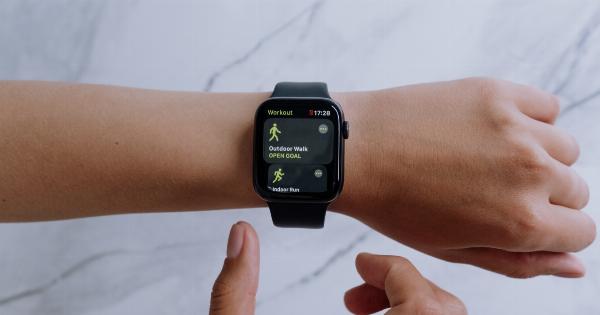Artificial intelligence (AI) and machine learning have taken the world by storm with its progressive technological advancements.
AI has proved to be useful in various industries by improving efficiencies, simplifying processes, reducing labour intensity, and enabling entirely new use cases and products. One of the areas where AI and machine learning have seen a significant impact is healthcare and insurance industry.
1. Personalized Treatment and Care
One of the primary advantages AI has brought to the healthcare industry is the ability to provide personalize health care services. Machine learning can understand patterns and trends, which allows for the identification of risk factors in individuals.
Insights from machine learning and AI can help physicians come up with more personalized treatment and pharmaceutical options. A greater level of personalization leads to better patient outcomes as it takes into account the unique physiology and circumstances.
2. Medical Diagnosis and Treatment
AI and machine learning algorithms significantly impact the early diagnosis of medical conditions.
By analysing vast amounts of data, these technologies formulate predictions that can help healthcare professionals diagnose diseases more precisely and prescribe the right medication and treatment.
Such technology saves the time required for the patients to go through the traditional diagnosis process while healthcare service providers could identify unusual biological patterns that may lead to pre-emptive interventions before serious ailments develop.
3. Preventing Fraud and Mismanagement
Insurance fraud and abuse is a big problem for this sector. The induced fraud is the third largest crime in the United States.
AI and machine learning can help prevent fraudulent claims, saving insurance organizations significant resources of investigation processes. However, insurance providers may also benefit from applying machine learning to ensure the proper treatment and care is being delivered to all their customers.
4. Streamlining Claims Processing
Insurance claims processing is a critical and time-consuming process. Insurance claims investigators have to evaluate the details of claims to detect discrepancies and verify elements of claims.
With AI and machine learning, however, much of the claims processing can happen automatically. By leveraging algorithms to screen claims, insurance providers can speed up the processing time and avoid lengthy delays. This technology also frees up human resources and simplifies the claims process.
5. Predictive Modelling for Improved Care Outcomes
Predictive modelling is another application of machine learning and AI used in the healthcare and insurance sectors. It makes use of historical data and patterns to predict future healthcare events, customer satisfaction, claim issues, and other areas.
Such prediction models can positively impact healthcare by providing possible occurrences and interventions before a situation worsens. Predictive modelling also identifies potential claims risks and helps insurance providers plan accordingly and offer more tailored policies to lower the amounts of claims experienced in the future.
6. Monitoring and Managing Chronic Conditions
Managing chronic illnesses, such as diabetes and cancer, is another significant application of AI and machine learning in healthcare.
With the use of biomedical devices such as insulin and blood sugar monitors, input data integrated with machine learning and AI algorithms can provide health professionals and patients with real-time feedback and guidance on disease management. Continuous monitoring applications facilitate more preventative interventions, as health care professionals get alerts based on the high-risk patient data points.
Continuous Monitoring can lower health care costs by reducing hospitalization and emergency care, and improving medication adherence and reducing the need for higher intervention.
7. Augmenting Remote Care Services
Machine learning and AI can support remote care services through telemedicine. Telemedicine involves connecting with health care professionals over the internet or remote video conferencing.
By using machine learning and AI, healthcare providers can have machine learning algorithms assess patient risk scores to allocate limited resources more efficiently and provide the necessary treatment for patients in remote areas. Remote care services can use telemedicine access to offer consultations on minor conditions, monitor chronic patients far from their health care providers and assess vital signs through connected medical devices and wearable technologies.
8. Enhancing Medical Imaging
X-rays and medical imaging has been revolutionized with the utilization of AI and machine learning. AI-powered imaging automatically analyse images with a high level of precision and efficiency.
AI-powered radiology reads scans faster than human radiologists, and artificial intelligence and machine learning can detect abnormalities that may go unnoticed by the naked eye. This technology provides physicians with more precise and accurate imaging scans and expedites the decision-making process by medical experts.
9. Intelligent Pharmacy Management
Intelligent pharmacy management automated manual pharmacy operations and optimizes patient prescriptions.
By employing AI and machine learning, pharmacy benefits managers can automate workflows by predicting the inventory needs, analyzing patient data focused on their pharmacy experience. Machine learning also enables pharmacy managers to optimize their pharmacies and improve drug efficacy.
This technology helps distinguish the most effective drug options at the most affordable prices and supplies a database for the physicians to prescribe patients with the appropriate medication.
10. Creating a Healthier Experience for Patients
AI and machine learning have excellent potential to create a more comfortable healthcare experience.
It takes the place of administrative duties, reduces queue lines and admin duties, automates repetitive tasks, and enables healthcare providers to anticipate risk and present more personalized care. The data provided by AI to health care providers provides them with real-time information on how they deliver their services to their customers and tool to constantly improve customer satisfaction.




























